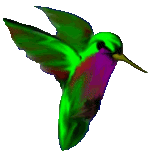Reading:
How the Art of Social Practice Is Changing the World, One Row House at a Time
Carolyn A. Miranda
This type of art of the encounter, frequently referred to as “social practice,” has been having a moment in art circles—albeit a moment that dates back a couple of decades. In that time, artists such as Rick Lowe in Houston and Theaster Gates in Chicago have turned urban renewal into an art form, transforming abandoned buildings into thriving cultural hubs. In Detroit, the Museum of Contemporary Art harbors Mobile Homestead, one of Mike Kelley’s final works, a near-exact replica of his childhood home, which now serves as an ever-evolving community center.
Certainly, the notion of participatory art is not new. The Surrealists were staging hands-on events in Paris almost a century ago. In the 1950s and ’60s, figures like Allan Kaprow and members of Fluxus were turning collective actions into art. The ’70s provided all manner of boundary-blurring social projects: from Miriam Schapiro and Judy Chicago’s Womanhouse in Los Angeles—which was part art installation, part educational facility, part performance space—to Mierle Laderman Ukeles’s pieces involving workers at the New York City Department of Sanitation. (She remains an artist in residence there to this day.) All of these traditions, and many others, have made their way into social practice, a stream of participatory art that tends to display a strong sociological and political bent, often in an effort to draw attention to social ills and conditions. Sometimes, these projects are meant to incite empowerment or change in a community.
Tom Finkelpearl is the author of What We Made: Conversations on Art and Social Cooperation, published last year by Duke University Press. He is also director of the Queens Museum in New York, which sponsored, along with the public-art nonprofit Creative Time, Tania Bruguera’s Immigrant Movement International, a piece begun in 2010 that resulted in the creation of a community center for immigrants in Corona, Queens. Finkelpearl defines social practice as “art that’s socially engaged, where the social interaction is at some level the art.”
He thinks that the popularity of social practice among today’s artists reflects a pendulum swing away from the art market. “It’s a reaction against the excesses of individualism,” he says. Indeed, with its ephemeral gatherings and activist happenings, social practice generally produces little in the way of salable objects. (Of the artists mentioned in this story, a slim minority have gallery representation, such as Hirschhorn and Gates, who show at Gladstone Gallery in New York and White Cube in London, respectively.)
Nato Thompson, chief curator of Creative Time, thinks that the form is a byproduct of our technology-reliant times. “I mean, doesn’t any kind of human interaction that isn’t on the Internet just feel very special?” he asks. Last fall, Creative Time and the Brooklyn Museum staged Suzanne Lacy’s Between the Door and the Street, in which 400 mostly female participants decked out in lemon-yellow scarves took over a brownstone-lined block in Brooklyn to discuss issues of gender, race, and class with passersby.
Ted Purves, who founded the program at CCA, explains that these courses emerged out of pedagogical necessity. “If you’re interested in doing work out in the world, you need another box of tools,” he says—tools that go beyond studio practice and art history. “You need classes on social theory, theories of politics, and theories of public space.”
Helguera’s interest in such interactive scenarios emerges from his own artwork. Last year, he created a crowd-sourced Spanish-language bookstore called Librería Donceles at Kent Fine Art in Chelsea, which became an impromptu hangout for Spanish speakers in a city without a dedicated Spanish-language used bookstore. Last month, the project traveled to Phoenix, where it was installed inside a defunct Borders bookshop under the auspices of Arizona State University. “We spend years in art school, where we are taught to explore ourselves,” Helguera says, “but social practice is completely about the opposite thing. It’s about how to listen. It’s remaining engaged with the world in an active way.”
...Caledonia Dance Curry is an artist based in Brooklyn. In some quarters, she is better known as Swoon, a moniker she adopted as a street artist in the late ’90s. Swoon has done intricate cut-paper installations in galleries and collaborated on a series of sculptural rafts that have navigated the waterways of Mississippi, New York, and Venice. A few years ago, she and a team of artists helped build sturdy Superadobe shelters and a community center in earthquake-ravaged Cormiers, Haiti. Currently, the group is in the Rust Belt town of Braddock, Pennsylvania, where they are rehabilitating an abandoned church.
“We’re trying to think about how we can regenerate this space so that the narrative isn’t simply about destruction,” Swoon says. To help do that, the group is building a kiln that will fire the bright ceramic tiles that will one day cover the roof—tiles the community will have a hand in making. “It’s not that different from my previous work,” she adds. “My question to myself as an artist has always been, ‘How do I make something that engages my city—that creates art where people don’t expect to find to it? And how can we change what’s valued and how we value it?’” Art is a universe that traffics in these symbols, which means social practice should feel right at home.



